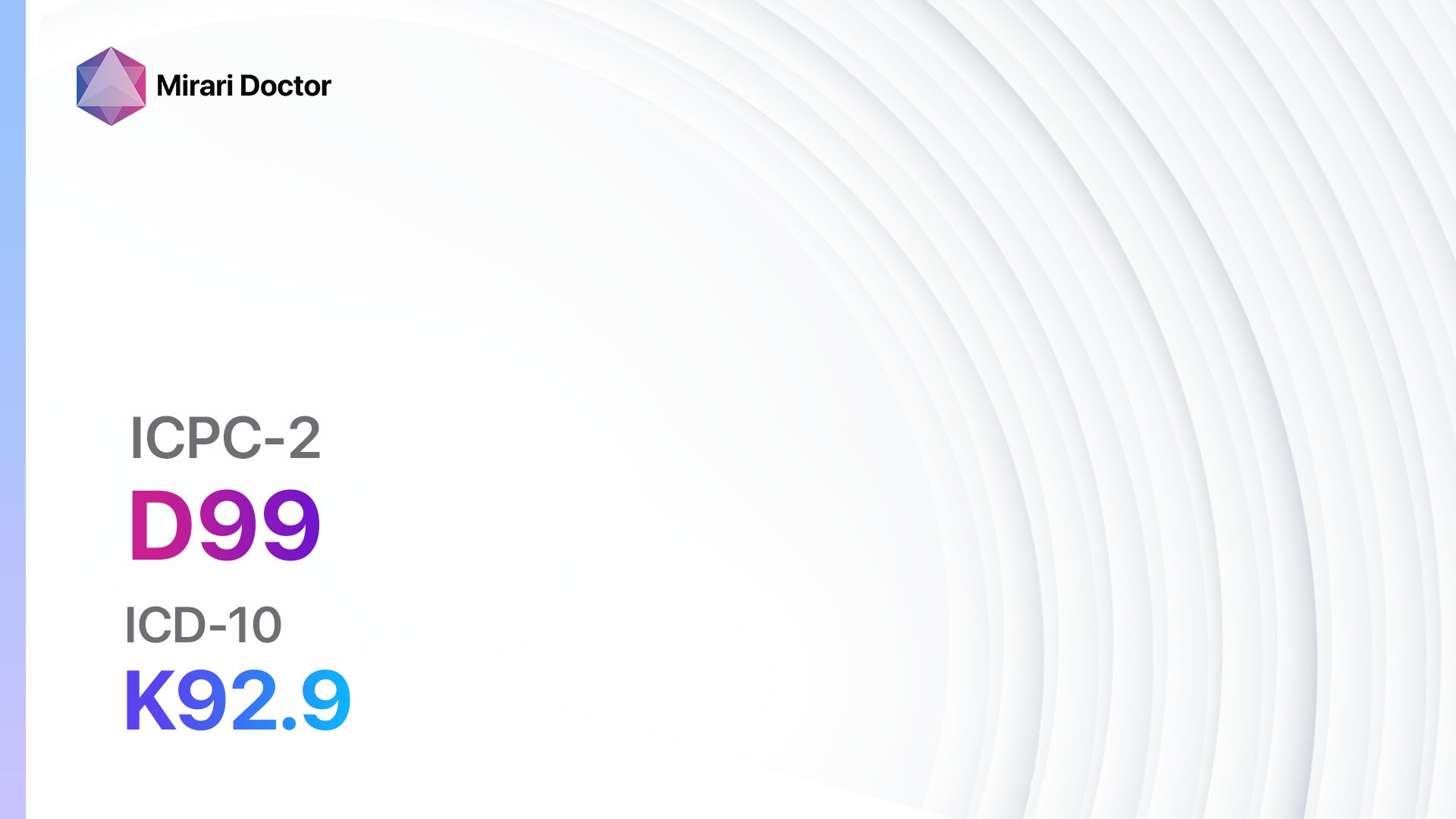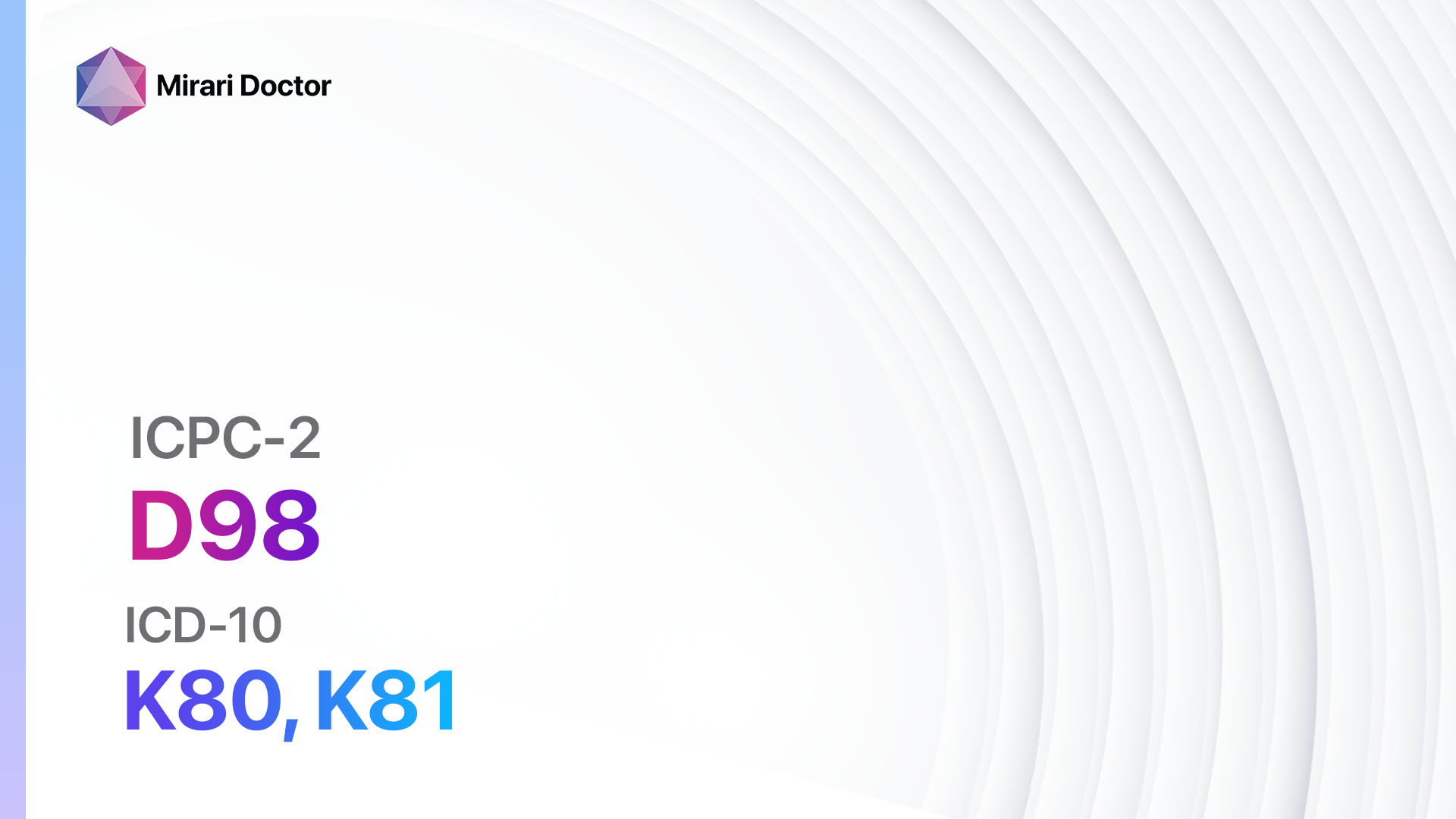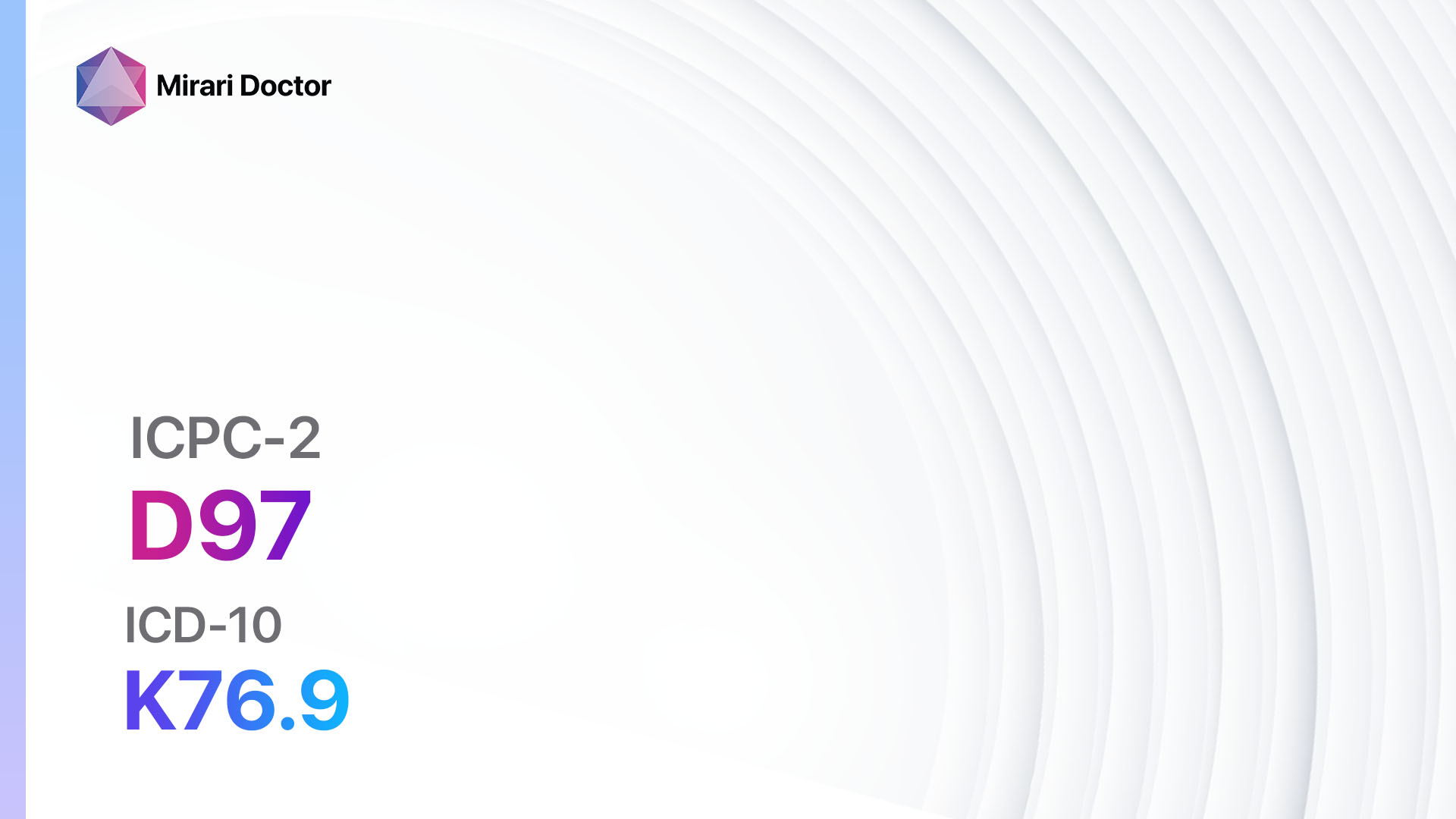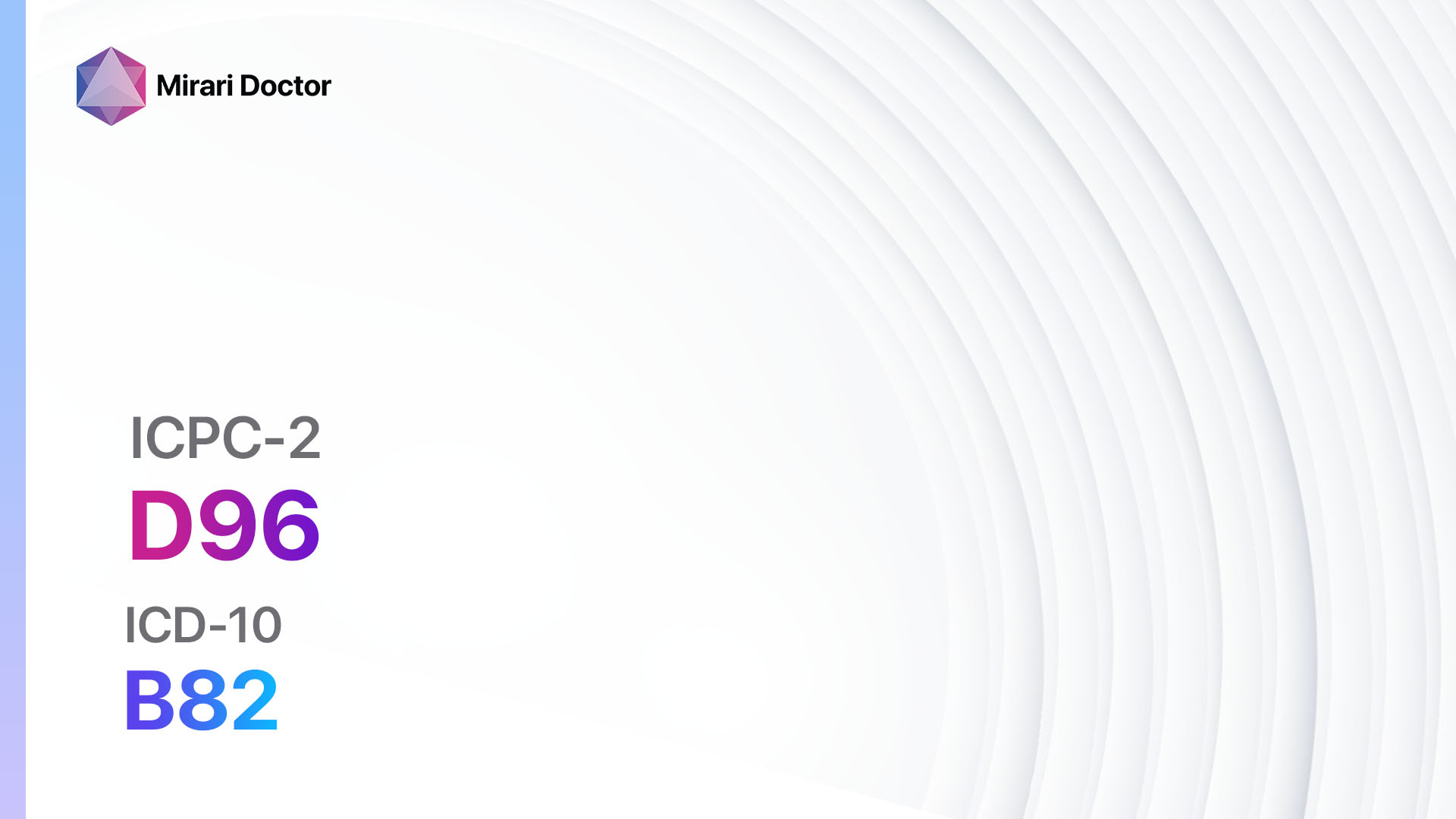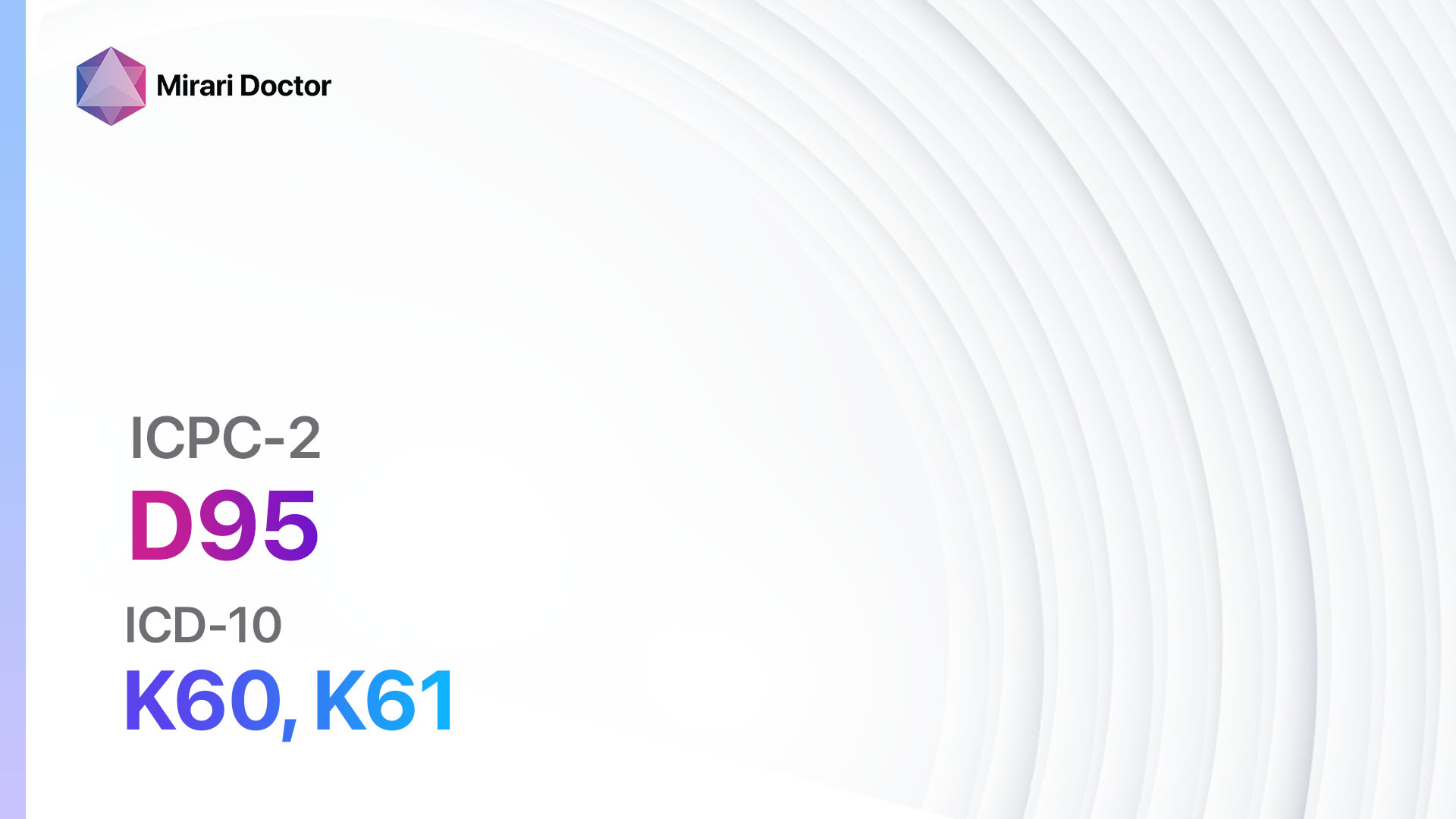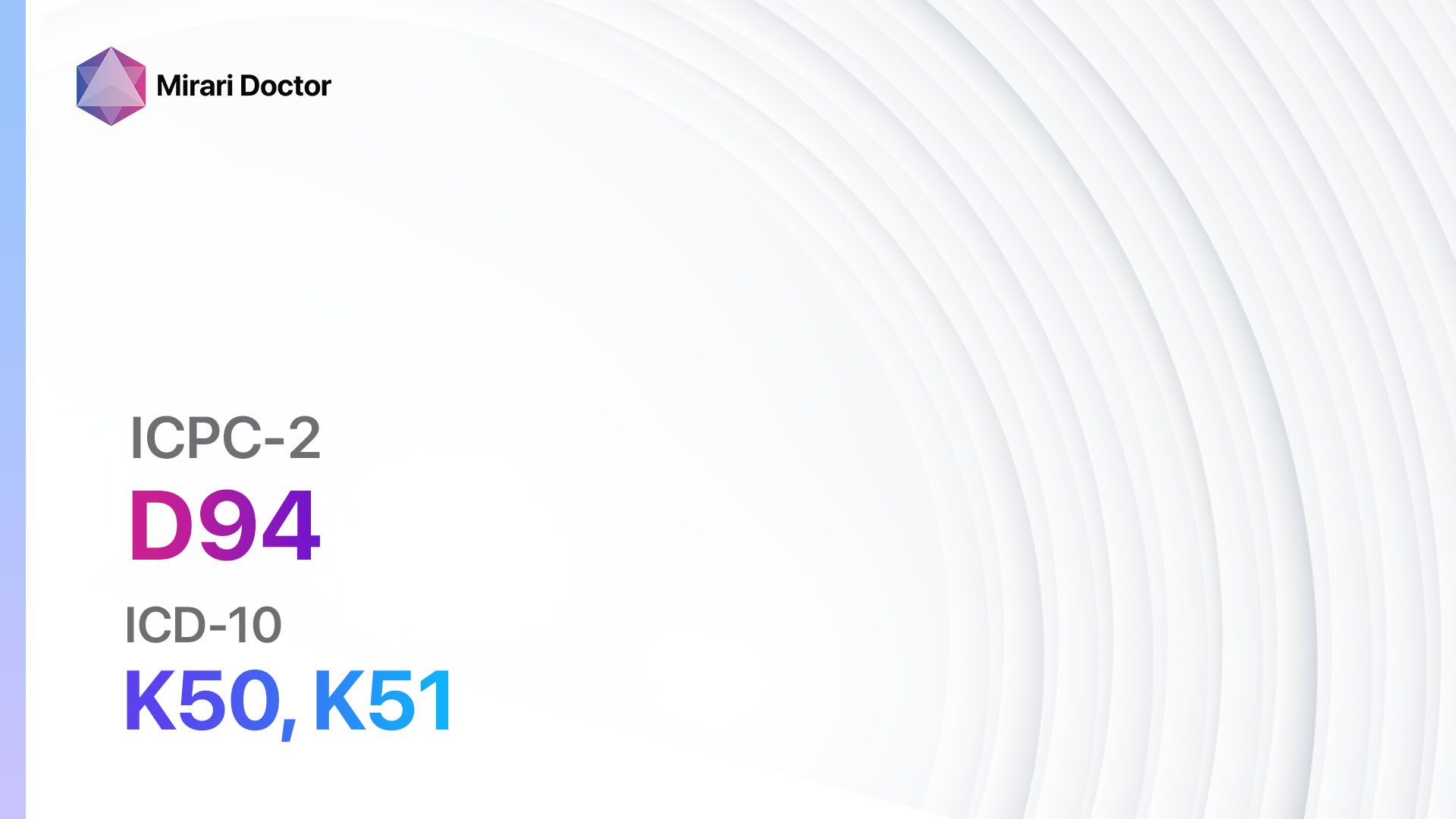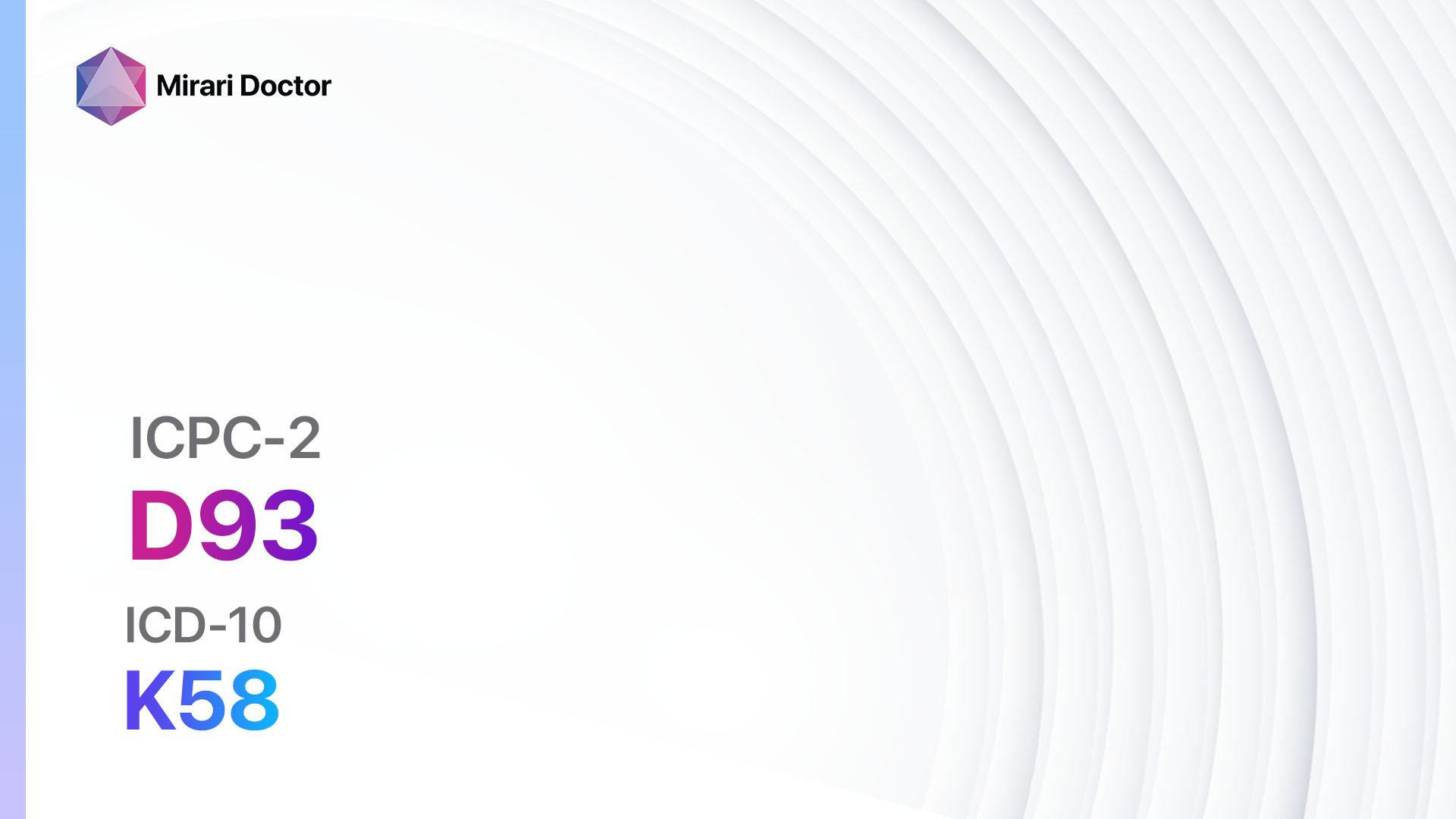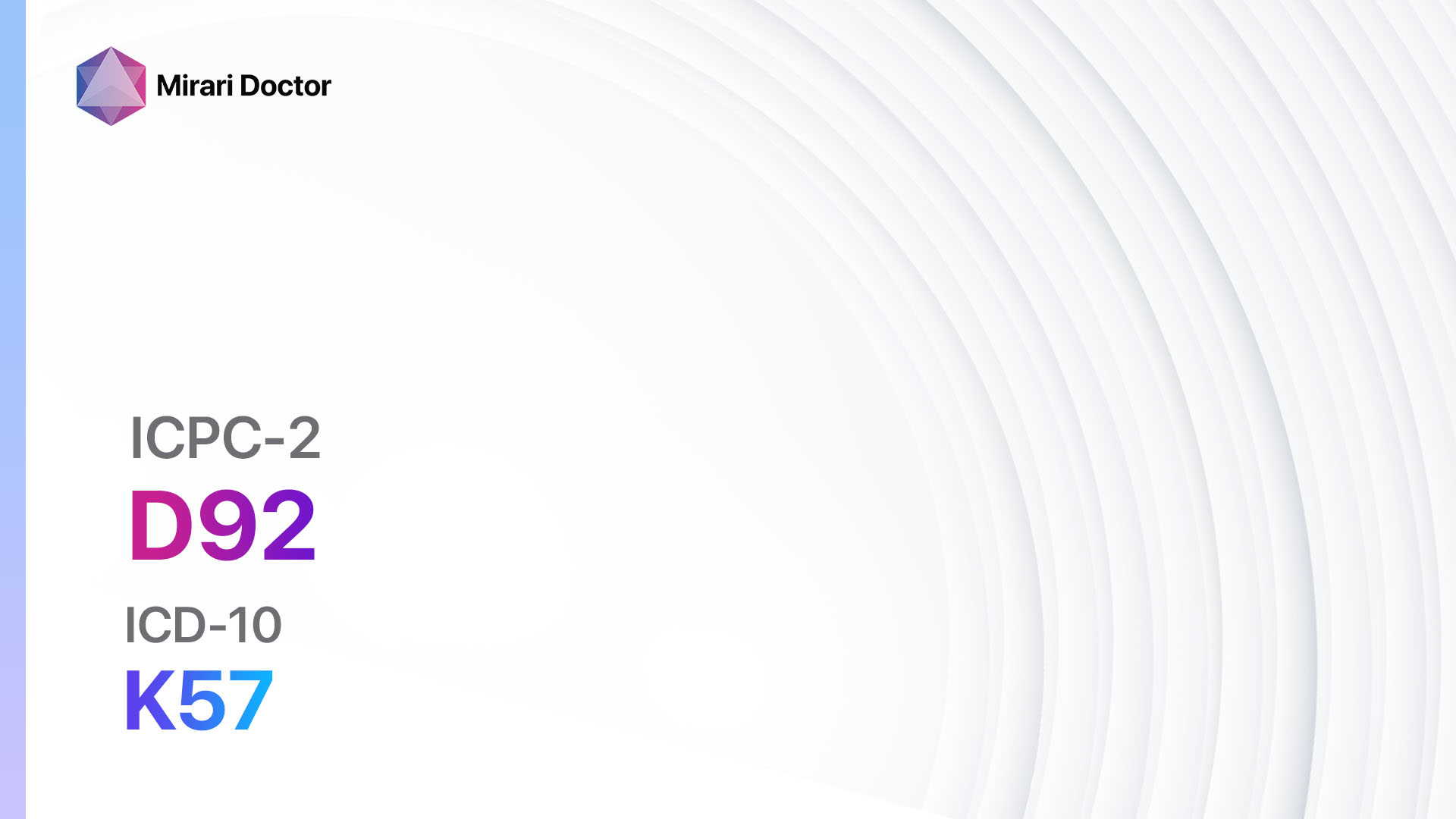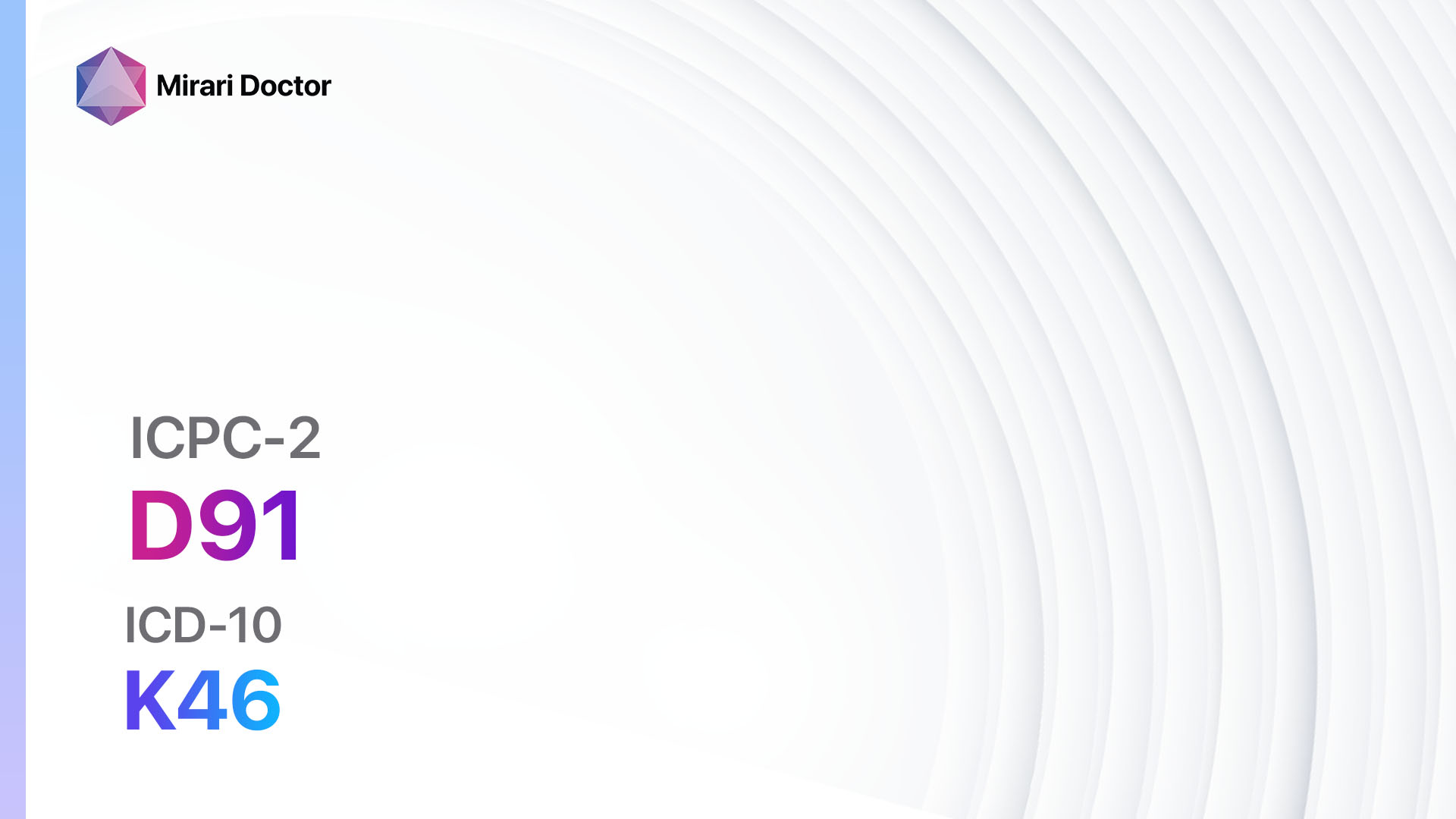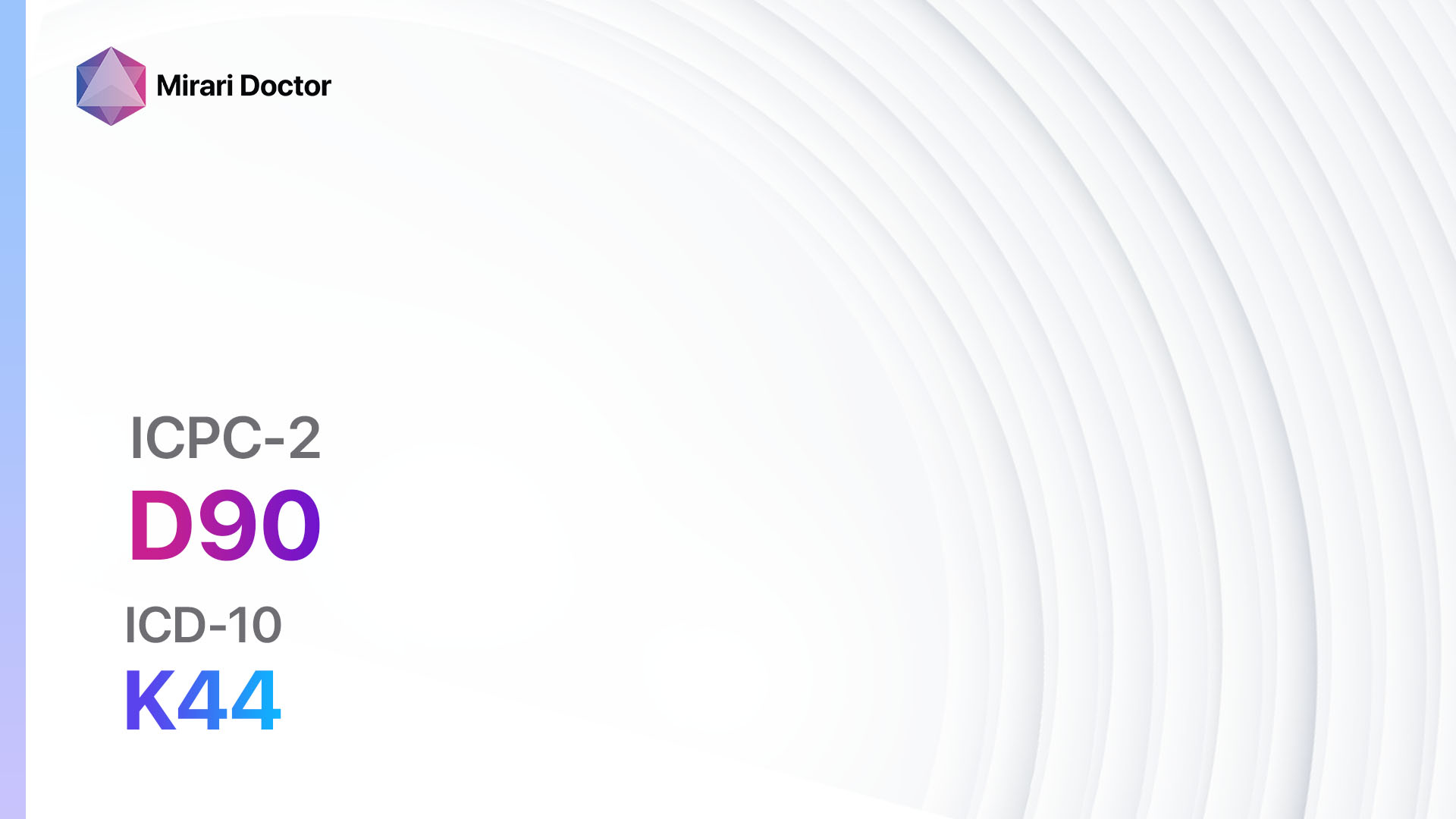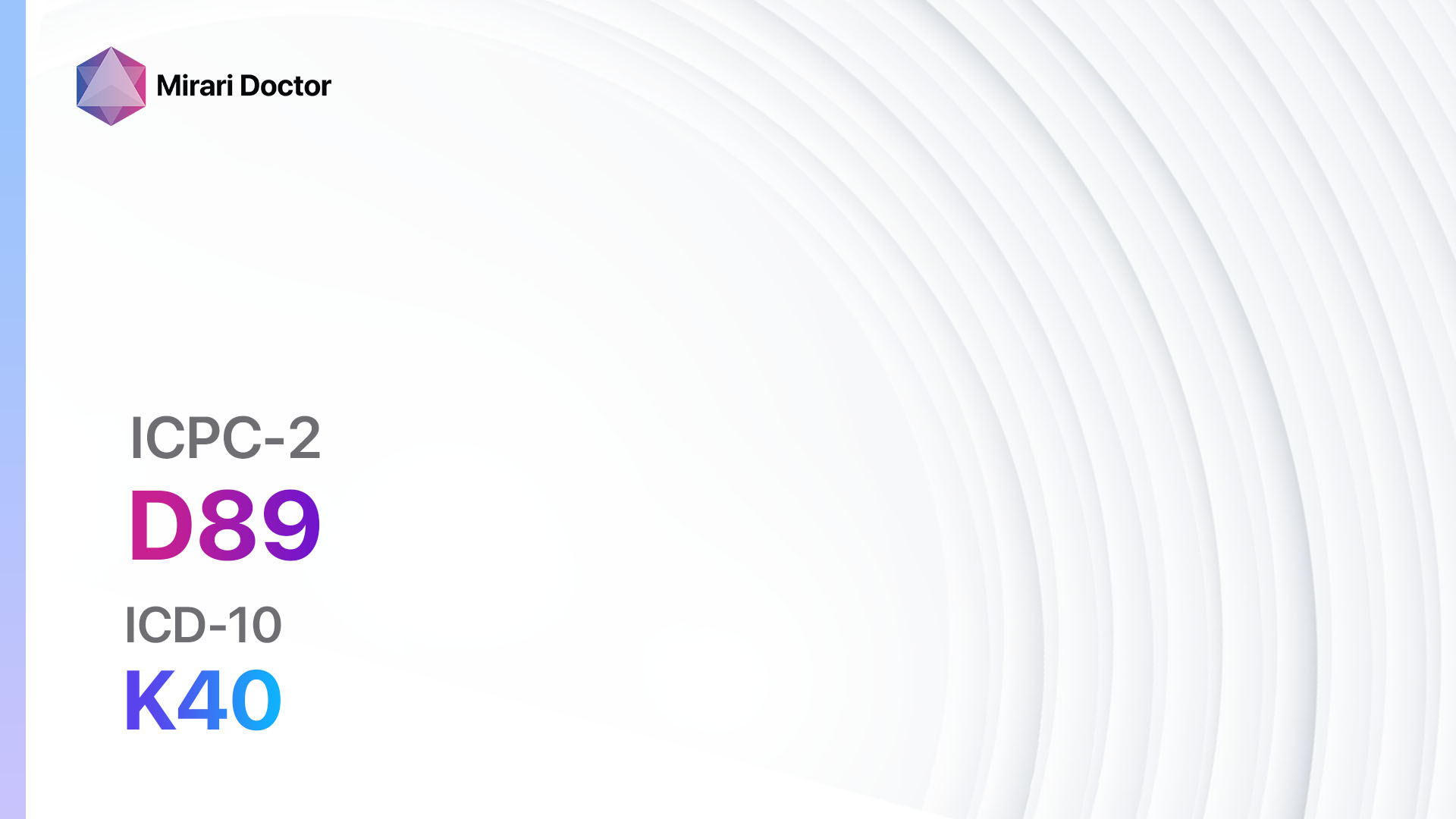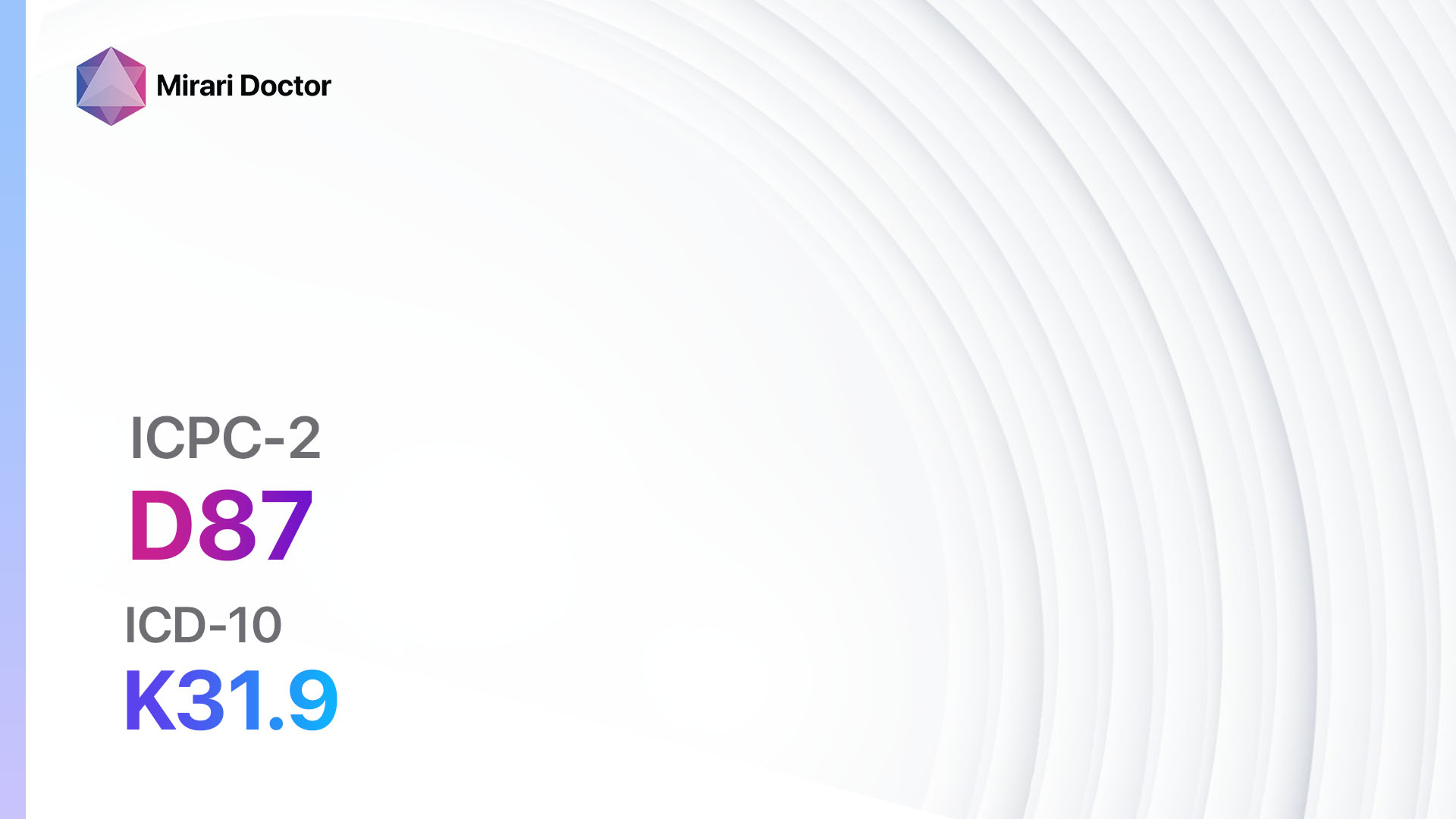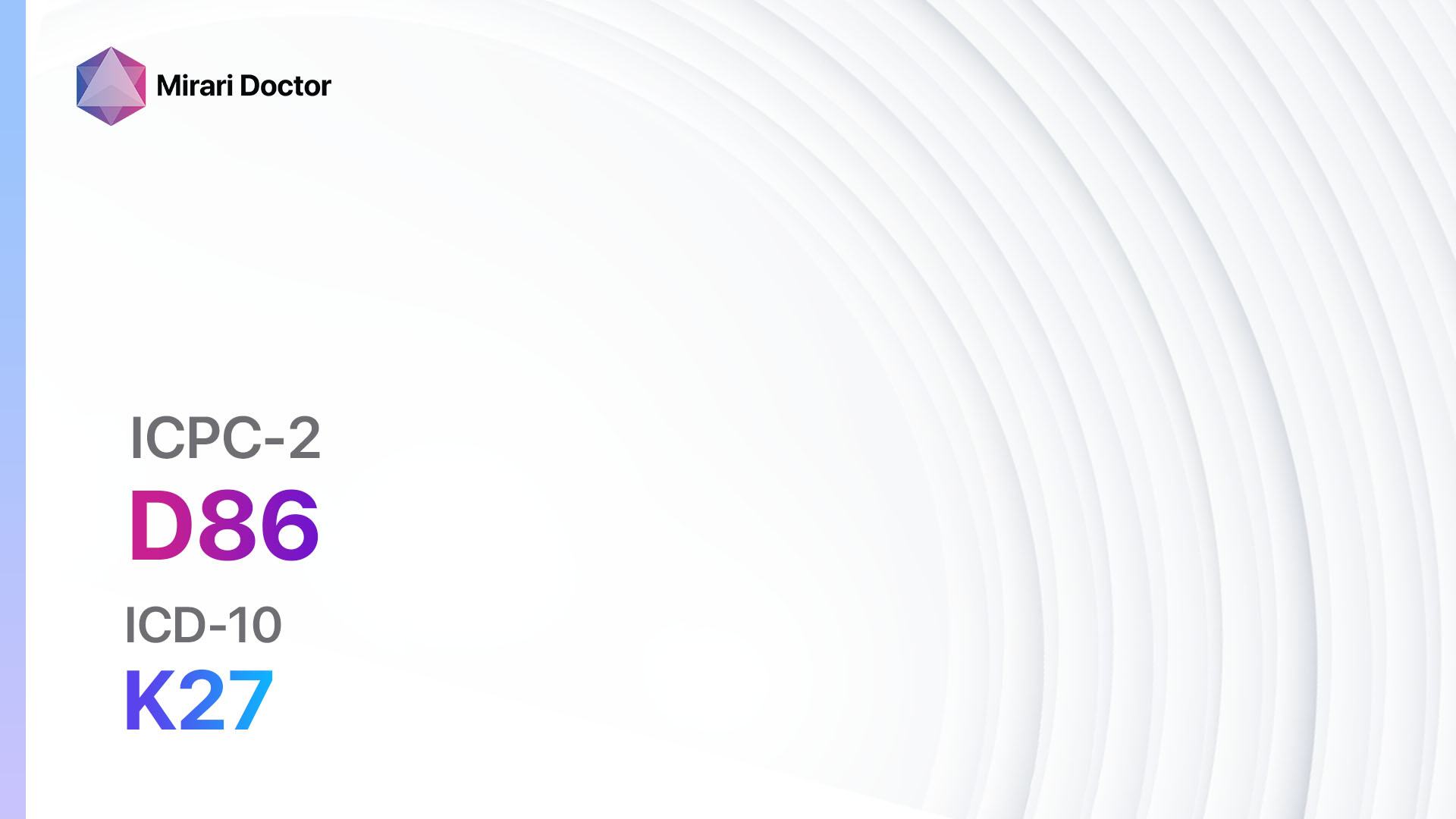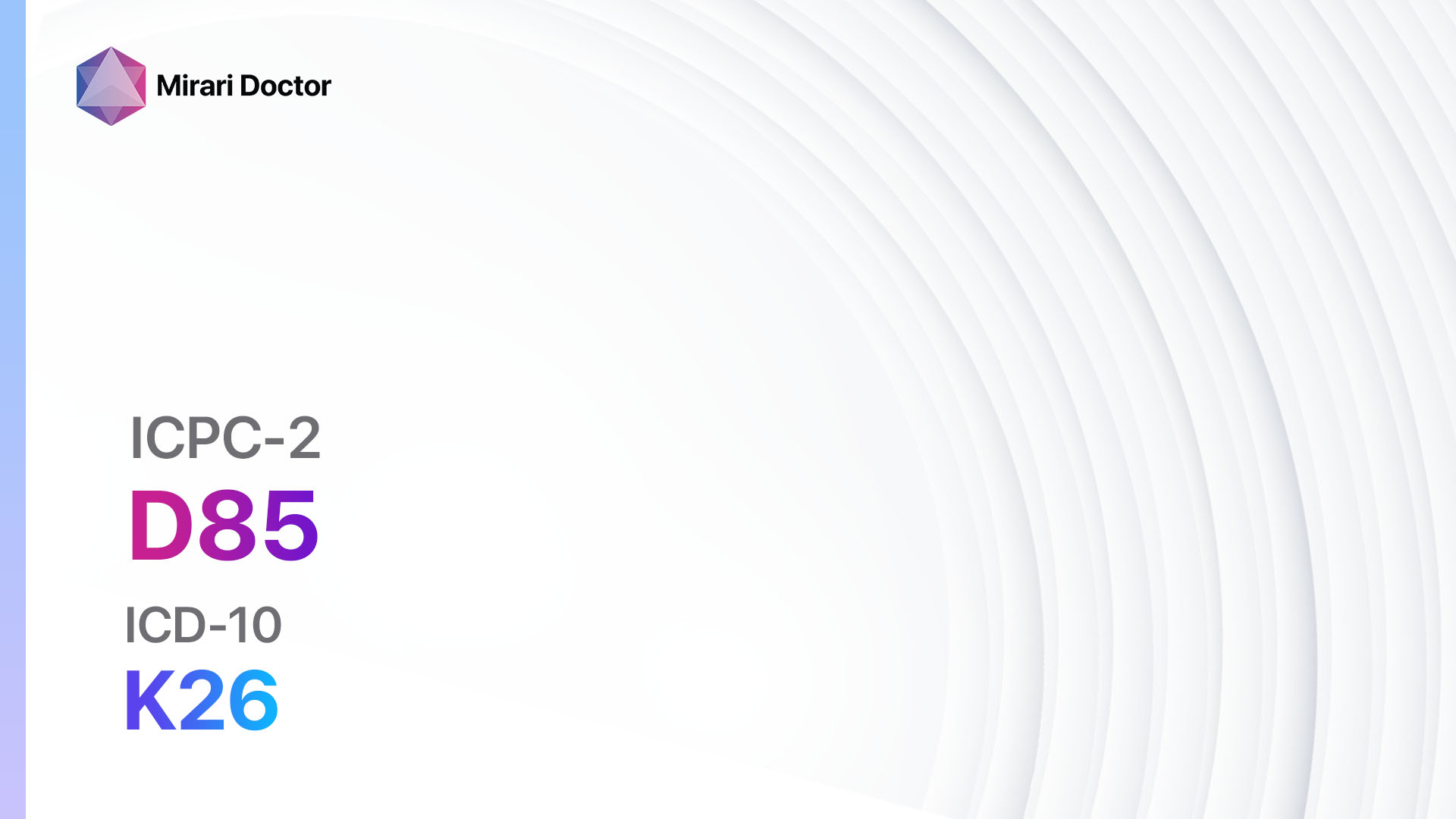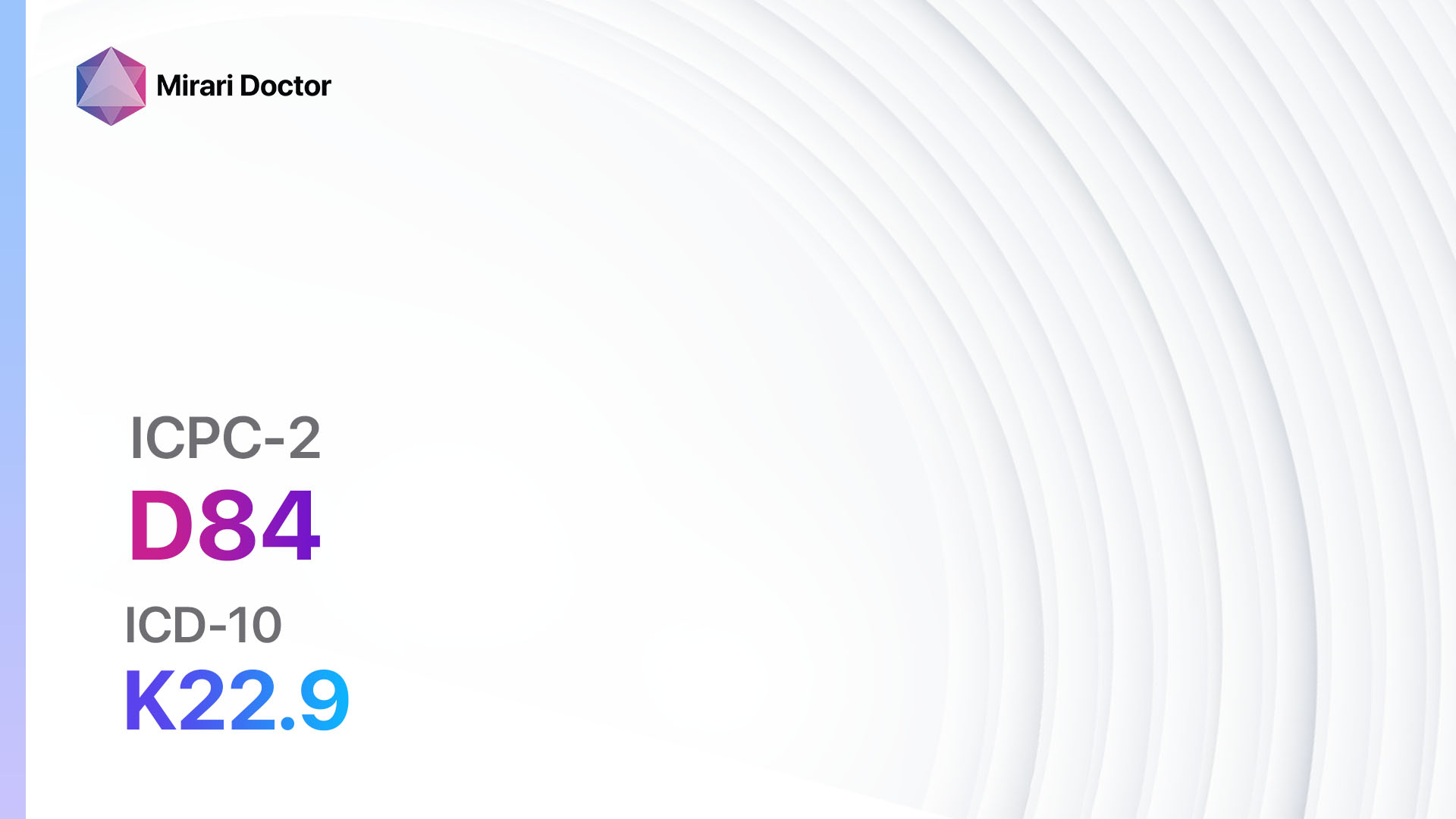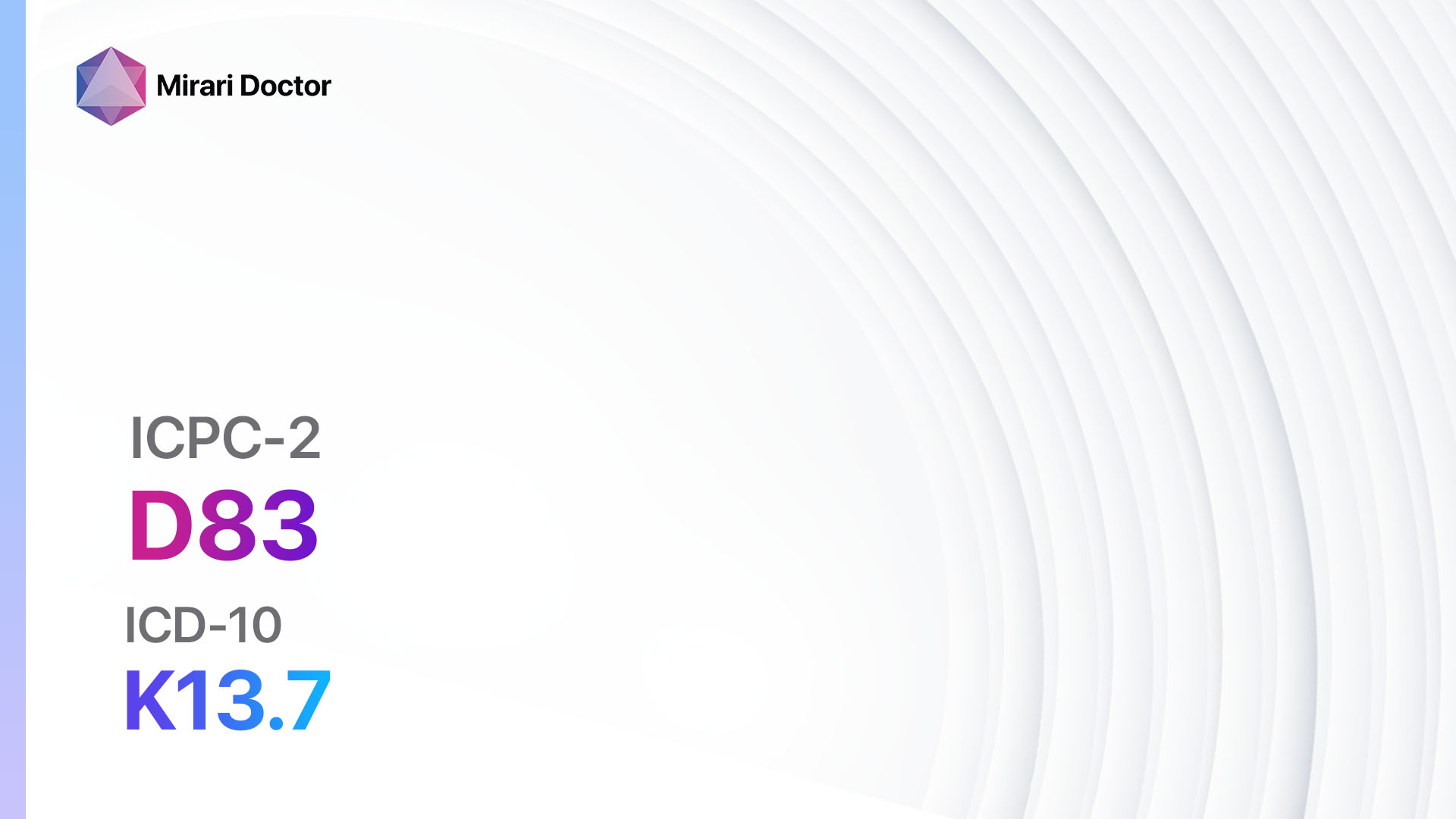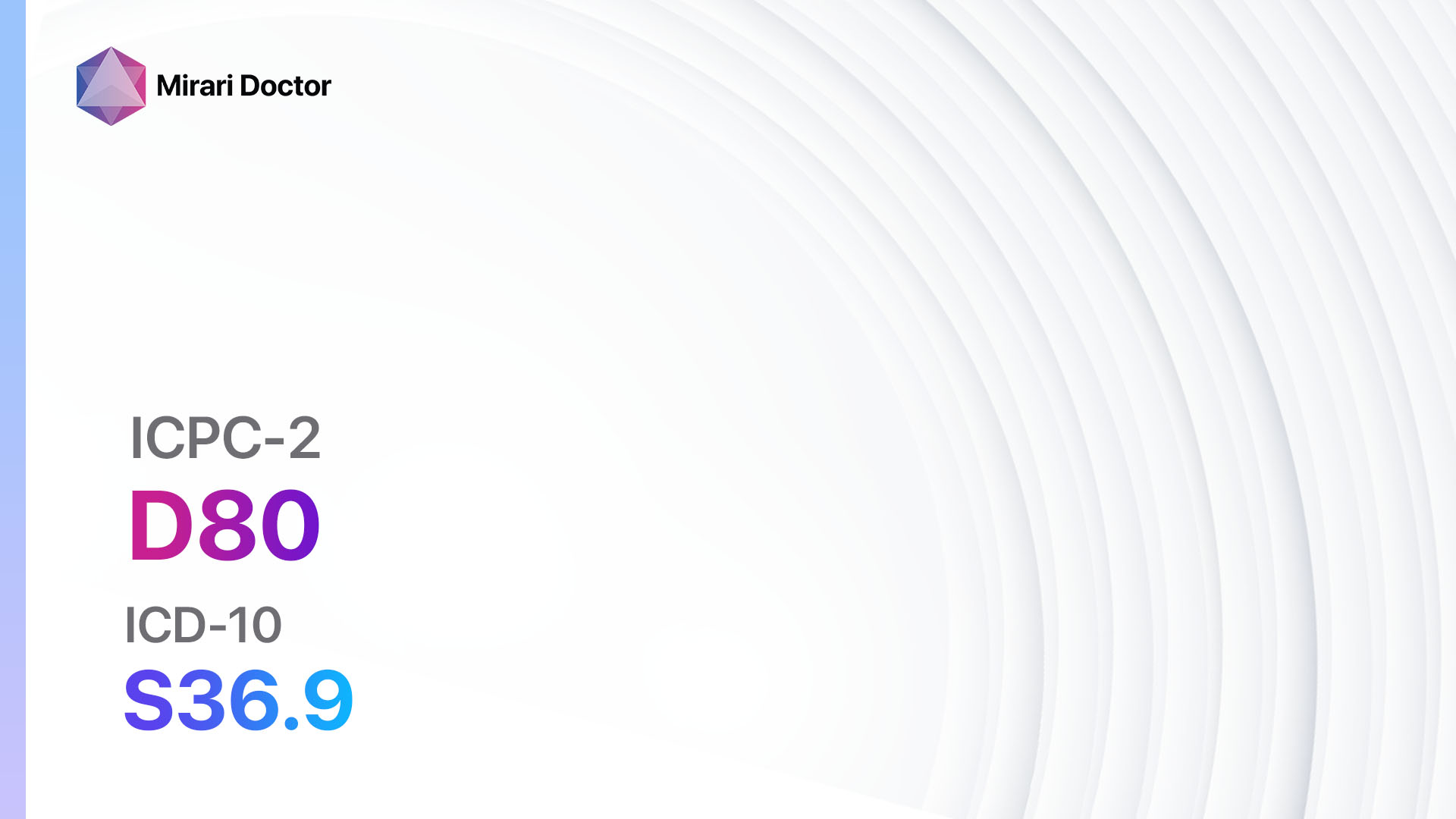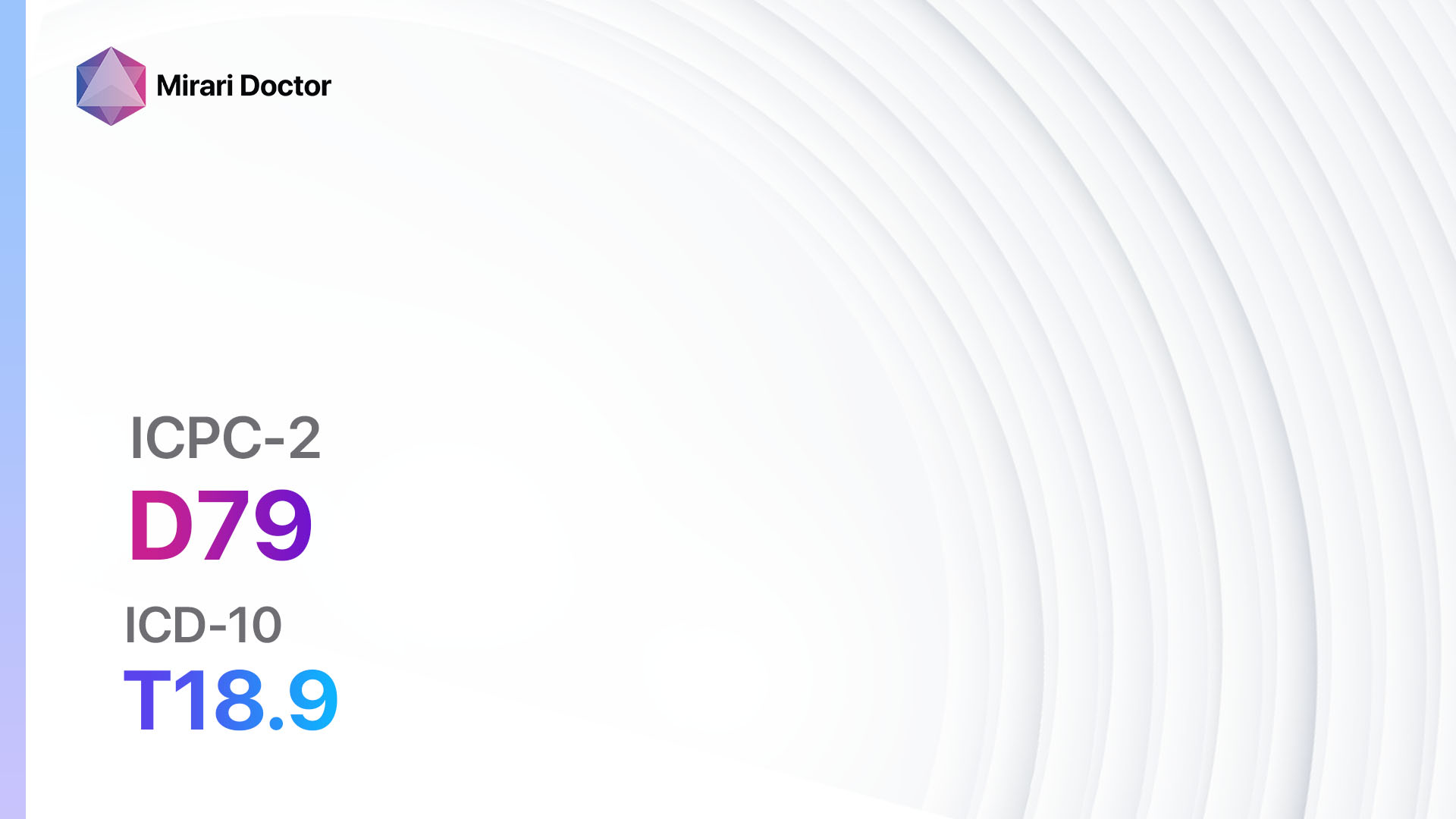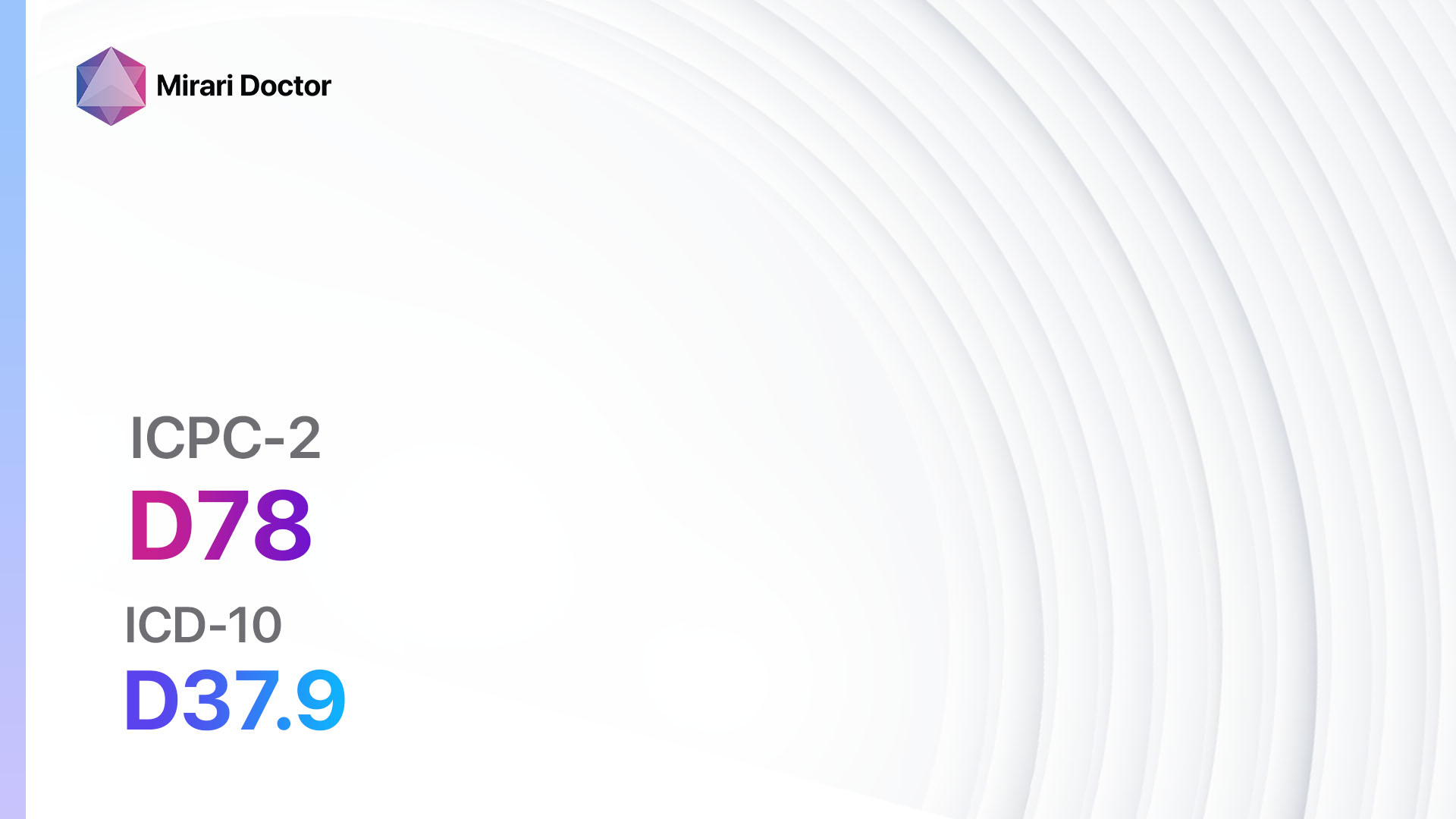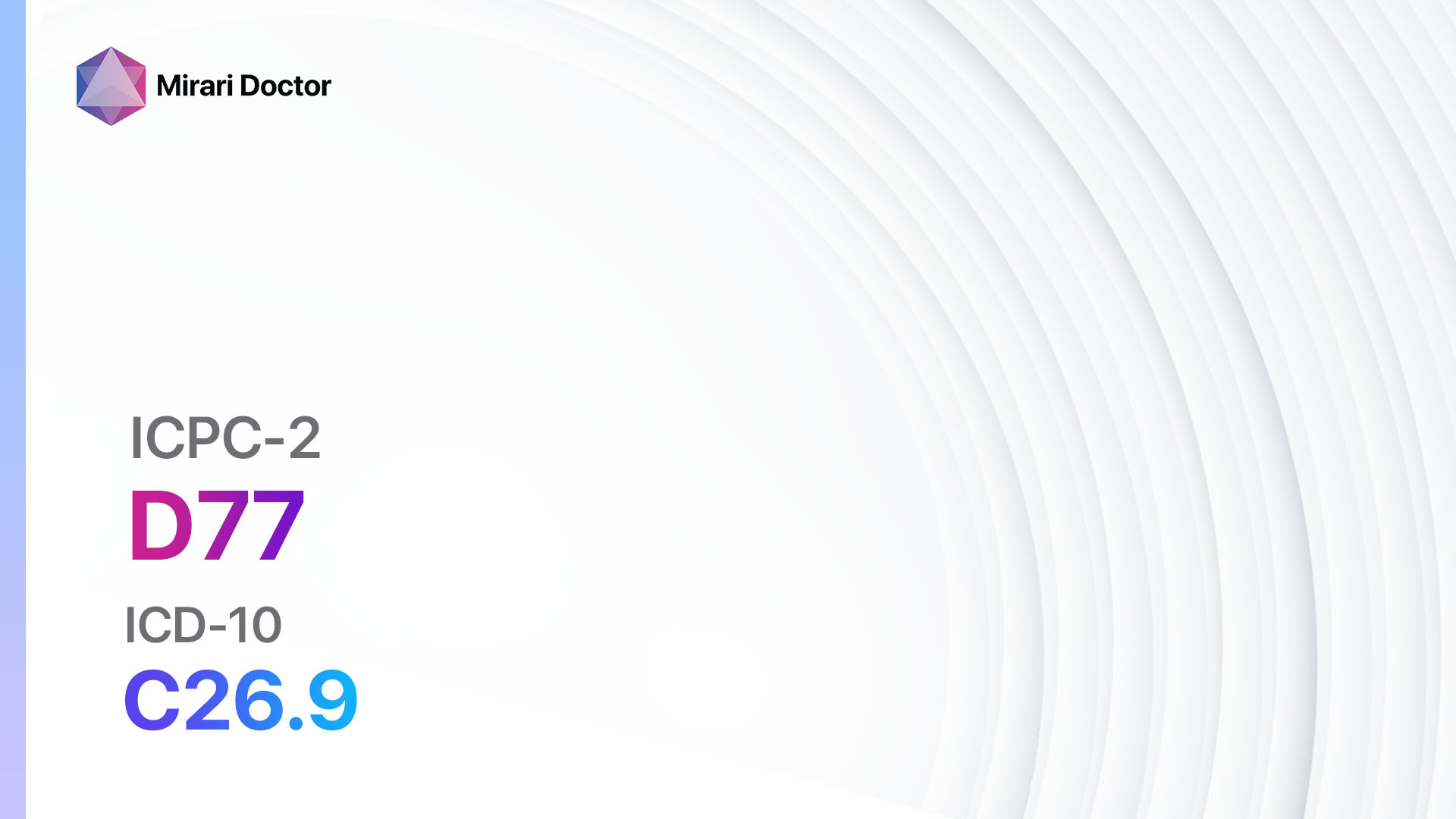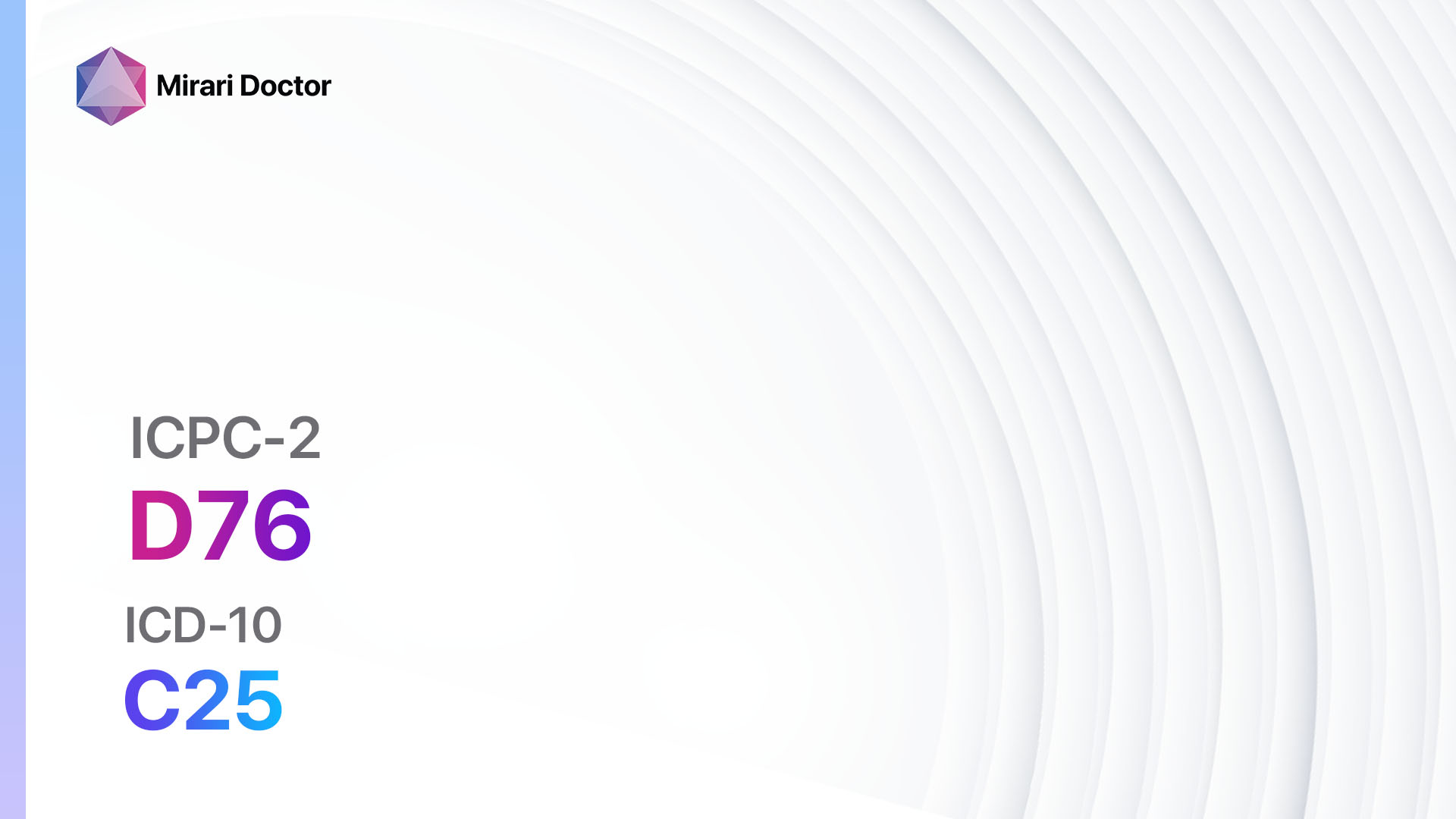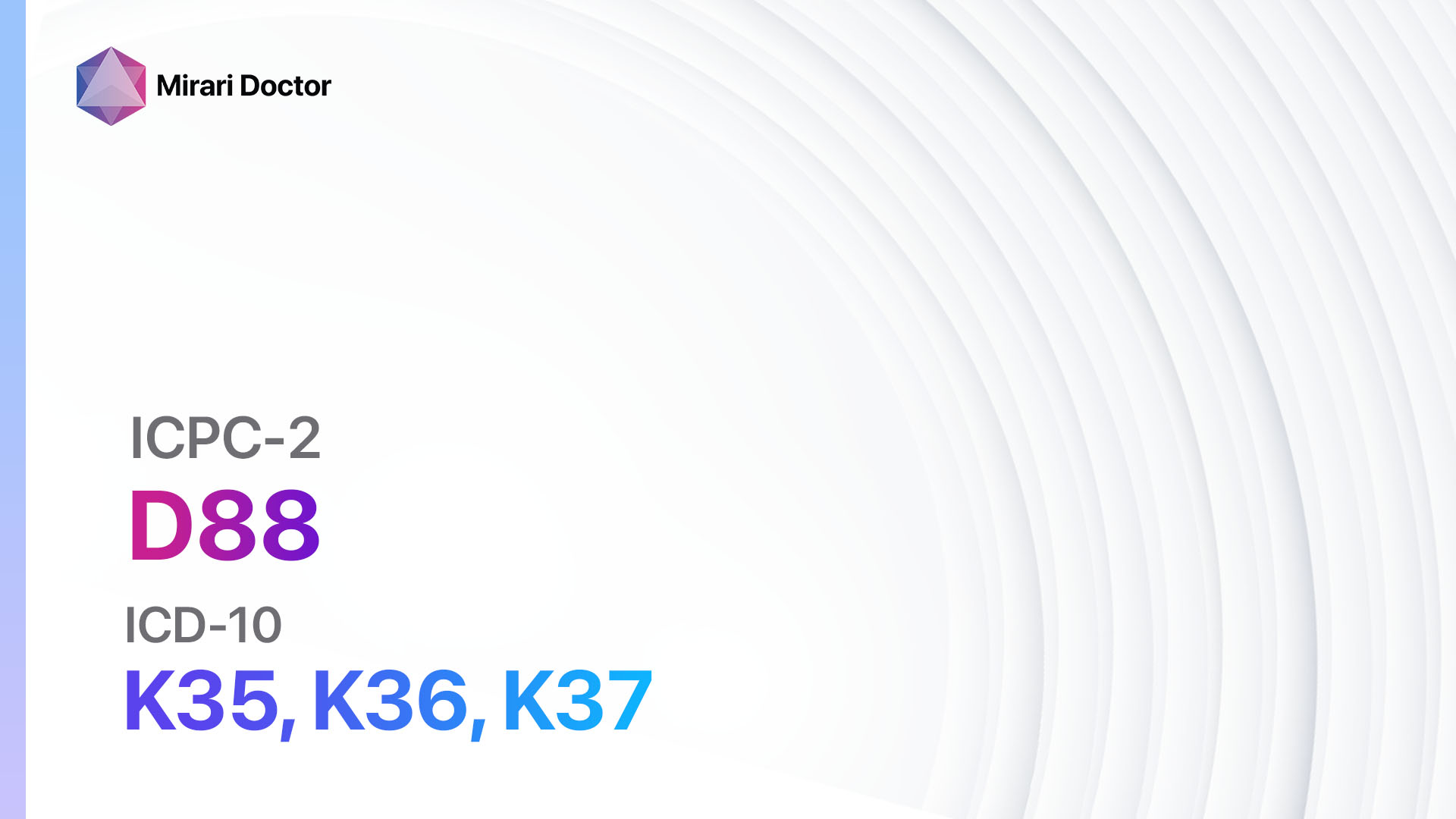
Introduction
Appendicitis is a condition characterized by inflammation of the appendix, a small pouch-like organ located in the lower right abdomen. It is a significant condition as it can lead to serious complications if not diagnosed and treated promptly[1]. The aim of this guide is to provide a comprehensive overview of the symptoms, causes, diagnostic steps, possible interventions, and patient education related to appendicitis.
Codes
- ICPC-2 Code: D88 Appendicitis[2]
- ICD-10 Code: K35 Acute appendicitis, K36 Other appendicitis, K37 Unspecified appendicitis[3]
Symptoms
- Abdominal pain: The most common symptom of appendicitis is pain in the lower right abdomen. The pain may start around the belly button and then move to the lower right side. It is usually sharp and persistent[4].
- Loss of appetite: Appendicitis can cause a decrease in appetite and a feeling of fullness even after eating small amounts of food[5].
- Nausea and vomiting: Many individuals with appendicitis experience nausea and may vomit[6].
- Fever: A low-grade fever may be present in some cases of appendicitis[7].
- Changes in bowel movements: Some individuals may experience changes in their bowel movements, such as diarrhea or constipation[8].
Causes
- Obstruction: The most common cause of appendicitis is the obstruction of the appendix. This can occur due to the buildup of hardened stool, foreign objects, or enlarged lymphoid tissue[9].
- Infection: Infection of the appendix can also lead to appendicitis. Bacterial or viral infections can cause inflammation and swelling of the appendix[10].
Diagnostic Steps
Medical History
- Gather information about the patient’s symptoms, including the location, severity, and duration of abdominal pain.
- Ask about any previous episodes of similar pain or previous diagnosis of appendicitis.
- Inquire about other symptoms such as nausea, vomiting, fever, and changes in bowel movements.
- Identify any risk factors for appendicitis, such as a family history of the condition or a history of gastrointestinal disorders.
Physical Examination
- Perform a thorough physical examination of the abdomen, focusing on the lower right quadrant.
- Palpate the abdomen to check for tenderness and rebound tenderness.
- Look for signs of inflammation, such as redness or swelling.
- Check for signs of peritonitis, such as guarding or rigidity of the abdomen.
Laboratory Tests
- Complete blood count (CBC): A CBC can help identify an elevated white blood cell count, which is often seen in cases of appendicitis.
- Urinalysis: A urinalysis can help rule out other conditions that may cause similar symptoms, such as urinary tract infection or kidney stones.
- C-reactive protein (CRP): Elevated levels of CRP may indicate inflammation in the body, including the appendix.
Diagnostic Imaging
- Ultrasound: Ultrasound imaging can be used to visualize the appendix and identify any signs of inflammation or obstruction.
- Computed tomography (CT) scan: A CT scan can provide detailed images of the appendix and surrounding structures, helping to confirm the diagnosis of appendicitis.
- Magnetic resonance imaging (MRI): MRI may be used in certain cases, such as in pregnant women or individuals with a known allergy to contrast dye.
Other Tests
- Diagnostic laparoscopy: In some cases, a laparoscopic procedure may be performed to directly visualize the appendix and confirm the diagnosis of appendicitis.
- Exploratory laparotomy: This surgical procedure may be necessary if the diagnosis is uncertain or if complications are suspected.
Follow-up and Patient Education
- Provide the patient with information about the diagnosis of appendicitis and the recommended treatment plan.
- Discuss the importance of follow-up appointments and any necessary lifestyle modifications.
- Educate the patient about the signs and symptoms of complications, such as peritonitis or abscess formation, and when to seek immediate medical attention.
Possible Interventions
Traditional Interventions
Medications:
Top 5 drugs for Appendicitis:
- Antibiotics (e.g., Ceftriaxone, Metronidazole):
- Cost: Generic versions can range from $10 to $50.
- Contraindications: Allergy to antibiotics, severe liver disease.
- Side effects: Nausea, diarrhea, allergic reactions.
- Severe side effects: Severe allergic reactions, Clostridium difficile infection.
- Drug interactions: Warfarin, certain antacids.
- Warning: Complete the full course of antibiotics as prescribed.
- Analgesics (e.g., Acetaminophen, Ibuprofen):
- Cost: Generic versions can range from $3 to $10.
- Contraindications: Allergy to analgesics, severe liver or kidney disease.
- Side effects: Upset stomach, dizziness, rash.
- Severe side effects: Liver or kidney damage, allergic reactions.
- Drug interactions: Warfarin, certain blood pressure medications.
- Warning: Follow the recommended dosage and avoid exceeding the maximum daily dose.
- Antiemetics (e.g., Ondansetron, Metoclopramide):
- Cost: Generic versions can range from $10 to $30.
- Contraindications: Allergy to antiemetics, intestinal obstruction.
- Side effects: Headache, dizziness, drowsiness.
- Severe side effects: Irregular heart rhythm, muscle stiffness.
- Drug interactions: Serotonin reuptake inhibitors, certain antibiotics.
- Warning: Use caution when operating machinery or driving due to potential drowsiness.
- Antipyretics (e.g., Acetaminophen):
- Cost: Generic versions can range from $3 to $10.
- Contraindications: Allergy to antipyretics, severe liver disease.
- Side effects: Upset stomach, rash, allergic reactions.
- Severe side effects: Liver damage, blood disorders.
- Drug interactions: Warfarin, certain antibiotics.
- Warning: Follow the recommended dosage and avoid exceeding the maximum daily dose.
- Antispasmodics (e.g., Dicyclomine):
- Cost: Generic versions can range from $10 to $30.
- Contraindications: Allergy to antispasmodics, glaucoma.
- Side effects: Dry mouth, blurred vision, constipation.
- Severe side effects: Increased heart rate, difficulty urinating.
- Drug interactions: Other anticholinergic medications, certain antidepressants.
- Warning: Avoid alcohol and activities requiring mental alertness while taking this medication.
Alternative Drugs:
- Probiotics: May help restore the balance of gut bacteria and reduce inflammation. Cost: Varies depending on the specific product.
- Herbal remedies: Some herbs, such as ginger or peppermint, may help relieve symptoms of nausea and abdominal pain. Cost: Varies depending on the specific product.
- Homeopathic remedies: Certain homeopathic remedies, such as Belladonna or Bryonia, may be used to alleviate symptoms. Cost: Varies depending on the specific product.
- Digestive enzymes: Can aid in digestion and reduce symptoms of bloating and gas. Cost: Varies depending on the specific product.
- Anti-inflammatory supplements: Omega-3 fatty acids or turmeric may help reduce inflammation. Cost: Varies depending on the specific product.
Surgical Procedures:
- Appendectomy: The surgical removal of the appendix is the standard treatment for appendicitis. Cost: $10,000 to $30,000.
- Drainage of abscess: In cases where an abscess has formed, a drainage procedure may be necessary. Cost: $5,000 to $15,000.
Alternative Interventions
- Acupuncture: May help alleviate pain and promote healing. Cost: $60 to $120 per session.
- Herbal remedies: Certain herbs, such as chamomile or peppermint, may have anti-inflammatory properties. Cost: Varies depending on the specific product.
- Heat therapy: Applying a heating pad or warm compress to the abdomen may help relieve pain. Cost: $10 to $30 for a heating pad.
- Mind-body techniques: Practices such as meditation or deep breathing exercises may help reduce stress and promote healing. Cost: Varies depending on the specific technique.
- Dietary modifications: Avoiding certain foods, such as spicy or greasy foods, may help reduce symptoms. Cost: Varies depending on individual food choices.
Lifestyle Interventions
- Rest and relaxation: Getting plenty of rest and reducing physical activity can help the body heal. Cost: Free.
- Hydration: Drinking an adequate amount of water can help prevent dehydration and promote healing. Cost: Free.
- Healthy diet: Consuming a balanced diet rich in fruits, vegetables, and whole grains can support overall health and healing. Cost: Varies depending on individual food choices.
- Stress management: Engaging in stress-reducing activities, such as yoga or meditation, can help promote healing. Cost: Varies depending on the specific activity.
- Regular exercise: Engaging in regular physical activity can help improve overall health and promote healing. Cost: Varies depending on individual preferences and choices.
It is important to note that the cost ranges provided are approximate and may vary depending on the location and availability of the interventions.
Mirari Cold Plasma Alternative Intervention
Understanding Mirari Cold Plasma
- Safe and Non-Invasive Treatment: Mirari Cold Plasma is a safe and non-invasive treatment option for various skin conditions. It does not require incisions, minimizing the risk of scarring, bleeding, or tissue damage.
- Efficient Extraction of Foreign Bodies: Mirari Cold Plasma facilitates the removal of foreign bodies from the skin by degrading and dissociating organic matter, allowing easier access and extraction.
- Pain Reduction and Comfort: Mirari Cold Plasma has a local analgesic effect, providing pain relief during the treatment, making it more comfortable for the patient.
- Reduced Risk of Infection: Mirari Cold Plasma has antimicrobial properties, effectively killing bacteria and reducing the risk of infection.
- Accelerated Healing and Minimal Scarring: Mirari Cold Plasma stimulates wound healing and tissue regeneration, reducing healing time and minimizing the formation of scars.
Mirari Cold Plasma Prescription
Video instructions for using Mirari Cold Plasma Device – D88 Appendicitis (ICD-10:K35, K36, K37)
| Mild | Moderate | Severe |
| Mode setting: 1 (Infection) Location: 2 (Prostate & Uterus) Morning: 15 minutes, Evening: 15 minutes |
Mode setting: 1 (Infection) Location: 2 (Prostate & Uterus) Morning: 30 minutes, Lunch: 30 minutes, Evening: 30 minutes |
Mode setting: 1 (Infection) Location: 2 (Prostate & Uterus) Morning: 30 minutes, Lunch: 30 minutes, Evening: 30 minutes |
| Mode setting: 2 (Wound Healing) Location: 2 (Prostate & Uterus) Morning: 15 minutes, Evening: 15 minutes |
Mode setting: 2 (Wound Healing) Location: 2 (Prostate & Uterus) Morning: 30 minutes, Lunch: 30 minutes, Evening: 30 minutes |
Mode setting: 2 (Wound Healing) Location: 2 (Prostate & Uterus) Morning: 30 minutes, Lunch: 30 minutes, Evening: 30 minutes |
| Mode setting: 3 (Antiviral Therapy) Location: 3 (Kidney, Liver & Spleen) Morning: 15 minutes, Evening: 15 minutes |
Mode setting:3 (Antiviral Therapy) Location: 3 (Kidney, Liver & Spleen) Morning: 30 minutes, Lunch: 30 minutes, Evening: 30 minutes |
Mode setting: 3 (Antiviral Therapy) Location: 3 (Kidney, Liver & Spleen) Morning: 30 minutes, Lunch: 30 minutes, Evening: 30 minutes |
| Mode setting: 7 (Immunotherapy) Location: 1 (Sacrum) Morning: 15 minutes, Evening: 15 minutes |
Mode setting: 7 (Immunotherapy) Location: 1 (Sacrum) Morning: 30 minutes, Lunch: 30 minutes, Evening: 30 minutes |
Mode setting: 7 (Immunotherapy) Location: 1 (Sacrum) Morning: 30 minutes, Lunch: 30 minutes, Evening: 30 minutes |
| Total Morning: 60 minutes approx. $10 USD, Evening: 60 minutes approx. $10 USD |
Total Morning: 120 minutes approx. $20 USD, Lunch: 120 minutes approx. $20 USD, Evening: 120 minutes approx. $20 USD, |
Total Morning: 120 minutes approx. $20 USD, Lunch: 120 minutes approx. $20 USD, Evening: 120 minutes approx. $20 USD, |
| Usual treatment for 7-60 days approx. $140 USD – $1200 USD | Usual treatment for 6-8 weeks approx. $2,520 USD – $3,360 USD |
Usual treatment for 3-6 months approx. $5,400 USD – $10,800 USD
|
 |
|
Use the Mirari Cold Plasma device to treat Appendicitis effectively.
WARNING: MIRARI COLD PLASMA IS DESIGNED FOR THE HUMAN BODY WITHOUT ANY ARTIFICIAL OR THIRD PARTY PRODUCTS. USE OF OTHER PRODUCTS IN COMBINATION WITH MIRARI COLD PLASMA MAY CAUSE UNPREDICTABLE EFFECTS, HARM OR INJURY. PLEASE CONSULT A MEDICAL PROFESSIONAL BEFORE COMBINING ANY OTHER PRODUCTS WITH USE OF MIRARI.
Step 1: Cleanse the Skin
- Start by cleaning the affected area of the skin with a gentle cleanser or mild soap and water. Gently pat the area dry with a clean towel.
Step 2: Prepare the Mirari Cold Plasma device
- Ensure that the Mirari Cold Plasma device is fully charged or has fresh batteries as per the manufacturer’s instructions. Make sure the device is clean and in good working condition.
- Switch on the Mirari device using the power button or by following the specific instructions provided with the device.
- Some Mirari devices may have adjustable settings for intensity or treatment duration. Follow the manufacturer’s instructions to select the appropriate settings based on your needs and the recommended guidelines.
Step 3: Apply the Device
- Place the Mirari device in direct contact with the affected area of the skin. Gently glide or hold the device over the skin surface, ensuring even coverage of the area experiencing.
- Slowly move the Mirari device in a circular motion or follow a specific pattern as indicated in the user manual. This helps ensure thorough treatment coverage.
Step 4: Monitor and Assess:
- Keep track of your progress and evaluate the effectiveness of the Mirari device in managing your Appendicitis. If you have any concerns or notice any adverse reactions, consult with your health care professional.
Note
This guide is for informational purposes only and should not replace the advice of a medical professional. Always consult with your healthcare provider or a qualified medical professional for personal advice, diagnosis, or treatment. Do not solely rely on the information presented here for decisions about your health. Use of this information is at your own risk. The authors of this guide, nor any associated entities or platforms, are not responsible for any potential adverse effects or outcomes based on the content.
Mirari Cold Plasma System Disclaimer
- Purpose: The Mirari Cold Plasma System is a Class 2 medical device designed for use by trained healthcare professionals. It is registered for use in Thailand and Vietnam. It is not intended for use outside of these locations.
- Informational Use: The content and information provided with the device are for educational and informational purposes only. They are not a substitute for professional medical advice or care.
- Variable Outcomes: While the device is approved for specific uses, individual outcomes can differ. We do not assert or guarantee specific medical outcomes.
- Consultation: Prior to utilizing the device or making decisions based on its content, it is essential to consult with a Certified Mirari Tele-Therapist and your medical healthcare provider regarding specific protocols.
- Liability: By using this device, users are acknowledging and accepting all potential risks. Neither the manufacturer nor the distributor will be held accountable for any adverse reactions, injuries, or damages stemming from its use.
- Geographical Availability: This device has received approval for designated purposes by the Thai and Vietnam FDA. As of now, outside of Thailand and Vietnam, the Mirari Cold Plasma System is not available for purchase or use.
References
-
- Appendicitis: Symptoms, Causes, Diagnosis, & Treatment – Health. (n.d.). Retrieved from https://www.health.com/appendicitis-overview-7108580
- ICPC-2 Code: D88 Appendicitis – RxReasoner. (n.d.). Retrieved from https://www.rxreasoner.com/icpc2codes/D88
- 2024 ICD-10-CM Diagnosis Code K35.2. (n.d.). Retrieved from https://www.icd10data.com/ICD10CM/Codes/K00-K95/K35-K38/K35-/K35.2
- Symptoms & Causes of Appendicitis – NIDDK. (n.d.). Retrieved from https://www.niddk.nih.gov/health-information/digestive-diseases/appendicitis/symptoms-causes
- Appendicitis: Early Symptoms and More – Healthline. (n.d.). Retrieved from https://www.healthline.com/health/appendicitis
- Appendicitis: Signs & Symptoms, Causes, Diagnosis & Treatment. (n.d.). Retrieved from https://my.clevelandclinic.org/health/diseases/8095-appendicitis
- Appendicitis – symptoms, treatments and causes – Healthdirect. (n.d.). Retrieved from https://www.healthdirect.gov.au/appendicitis
- What Is Appendicitis? Symptoms, Causes, Diagnosis, Treatment …. (n.d.). Retrieved from https://www.everydayhealth.com/appendicitis/guide/
- Diagnosis of Appendicitis – NIDDK. (n.d.). Retrieved from https://www.niddk.nih.gov/health-information/digestive-diseases/appendicitis/diagnosis
- Onodera, Risako ; Motoyama, Keiichi ; Arima, Hidetoshi (2011.0). Design and evaluation of folate-appended methyl-β-cyclodextrin as a new antitumor agent. DOI: 10.1007/s10847-010-9843-z
Related articles
Made in USA


